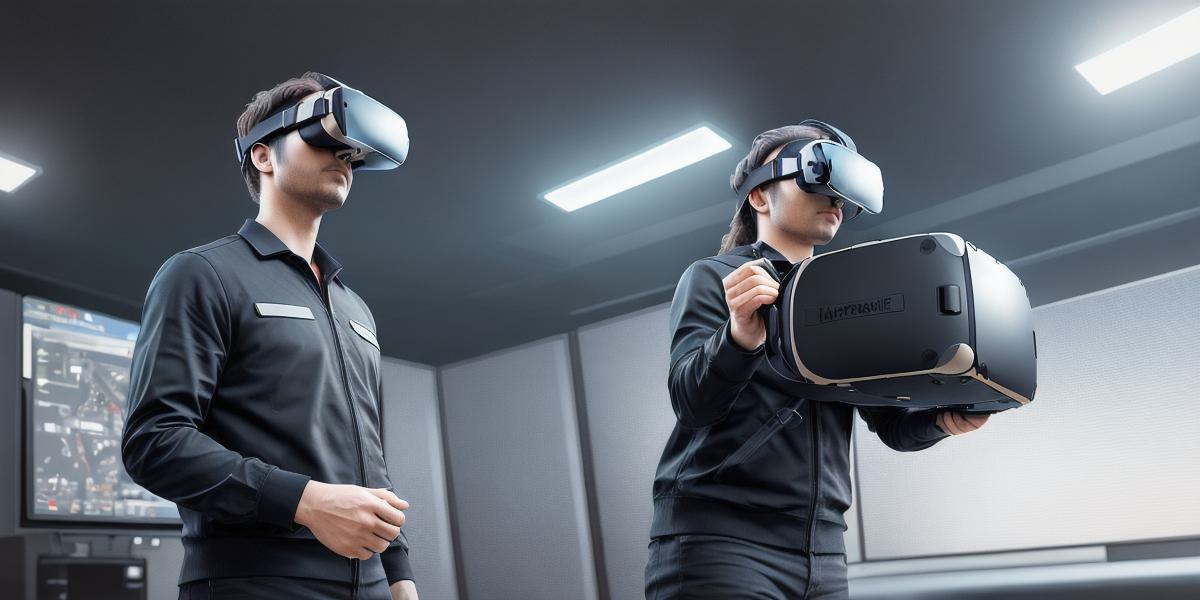Virtual reality (VR) is a rapidly growing technology that has the potential to revolutionize industries such as gaming, education, and healthcare. As VR continues to evolve, it’s important for developers to understand its key concepts and limitations in order to create immersive and effective experiences. In this guide, we will answer some of the most common questions about virtual reality.
What is Virtual Reality?
Virtual reality is a computer-generated simulation that allows users to interact with a digital environment as if they were physically present. VR technology typically consists of a head-mounted display (HMD) that tracks the user’s movements and provides a 360-degree view of the virtual world, along with sensors and controllers that allow for interaction within the simulation.
What are the benefits of Virtual Reality?
Virtual reality has many potential benefits, including:
- Enhanced training and simulation: VR allows for realistic simulations of dangerous or complex scenarios, which can be used for training in fields such as medicine, military, and aviation.
- Improved education and learning: VR can provide an immersive and engaging way to learn about history, science, and other subjects.
- Increased accessibility: VR can make it possible for people with disabilities or mobility issues to experience things that they may not be able to otherwise.
- Enhanced entertainment: VR gaming has the potential to create highly immersive and engaging experiences for players.
What are the limitations of Virtual Reality?
While virtual reality is a powerful technology, it also has some limitations to consider, including:
- High cost: VR equipment can be expensive, both for the hardware and software needed to create and experience simulations.
- Motion sickness: Some people may experience motion sickness or discomfort when using VR headsets for extended periods of time.
- Limited realism: Despite advances in technology, VR simulations are not yet able to perfectly replicate the real world. There may be limitations in terms of graphics, lighting, and physics.
- Lack of social interaction: While VR can provide a sense of immersion, it doesn’t offer the same level of social interaction as physical environments.
What are some best practices for creating Virtual Reality experiences?
To create effective virtual reality experiences, developers should consider the following best practices:
- Keep it simple: Don’t overload the user with too much information or complexity. Stick to the essentials and make the experience as intuitive and easy to use as possible.
- Test extensively: Virtual reality experiences need to be tested thoroughly to ensure that they are comfortable, engaging, and effective for the intended audience.
- Focus on storytelling: VR is a powerful medium for storytelling, so developers should consider how they can create an immersive narrative experience for the user.
- Optimize for performance: Virtual reality experiences need to run smoothly and seamlessly in order to avoid motion sickness or other issues.
FAQs:
Q: What kind of equipment do I need to get started with virtual reality?
A: To create virtual reality experiences, you will need a computer with sufficient hardware (such as a high-end graphics card), VR software, and the appropriate sensors and controllers for your intended audience. You may also need specialized equipment such as 360-degree cameras or motion capture technology depending on your goals.
Q: What kind of training can virtual reality be used for?
A: Virtual reality can be used for a wide range of training scenarios, including medical training, military training, aviation training, and more. By simulating real-world scenarios in a controlled environment, VR allows trainees to practice and improve their skills without the risk of injury or damage to equipment.
Q: What are some common limitations of virtual reality?
A: Some common limitations of virtual reality include high cost, motion sickness, limited realism, and lack of social interaction. Developers should be aware of these limitations when creating virtual reality experiences in order to create effective and engaging experiences for their intended audience.
